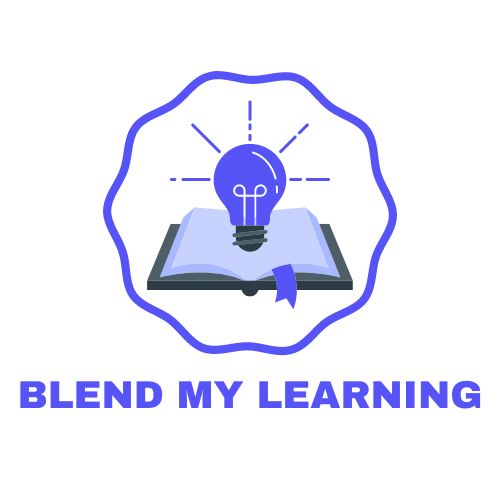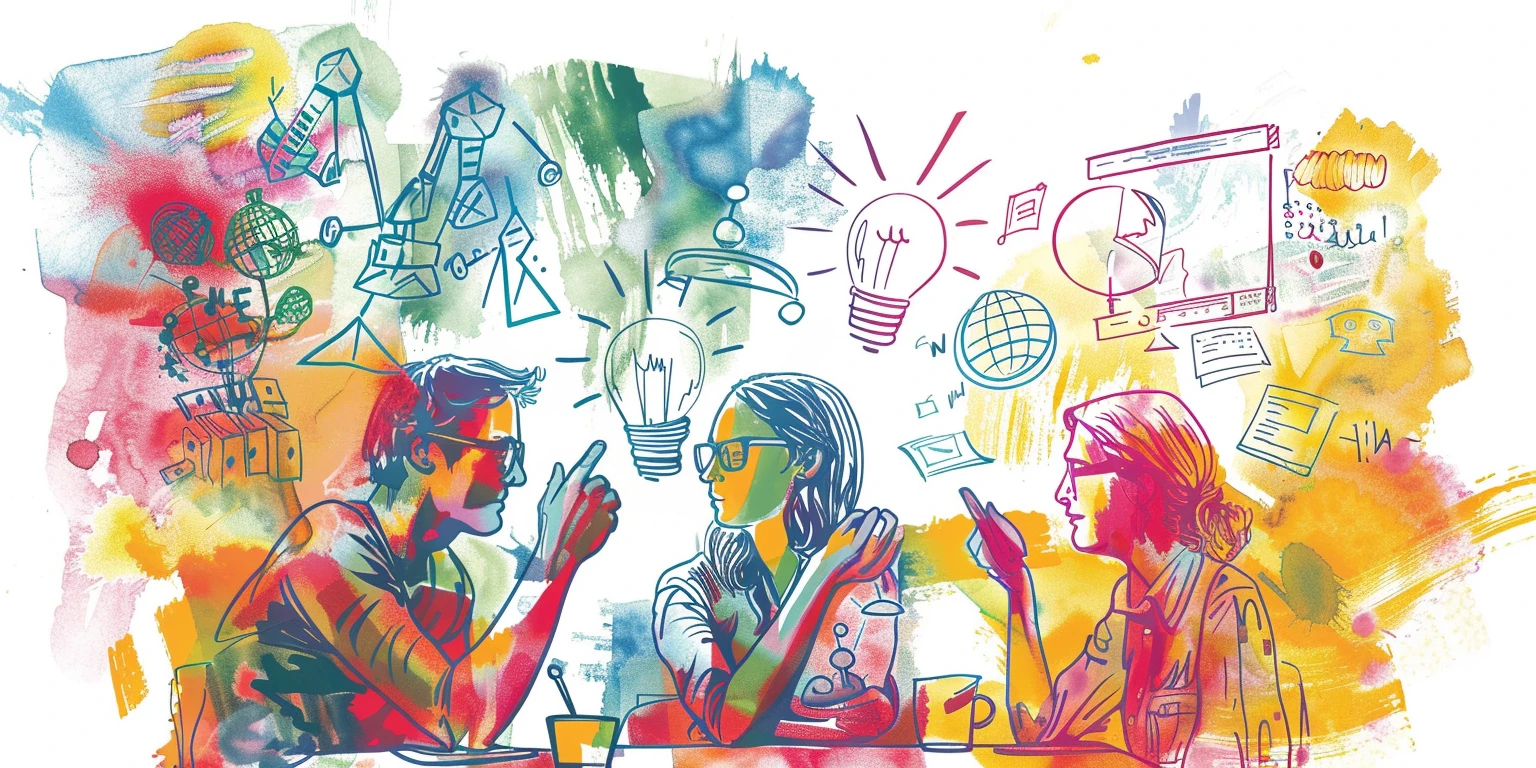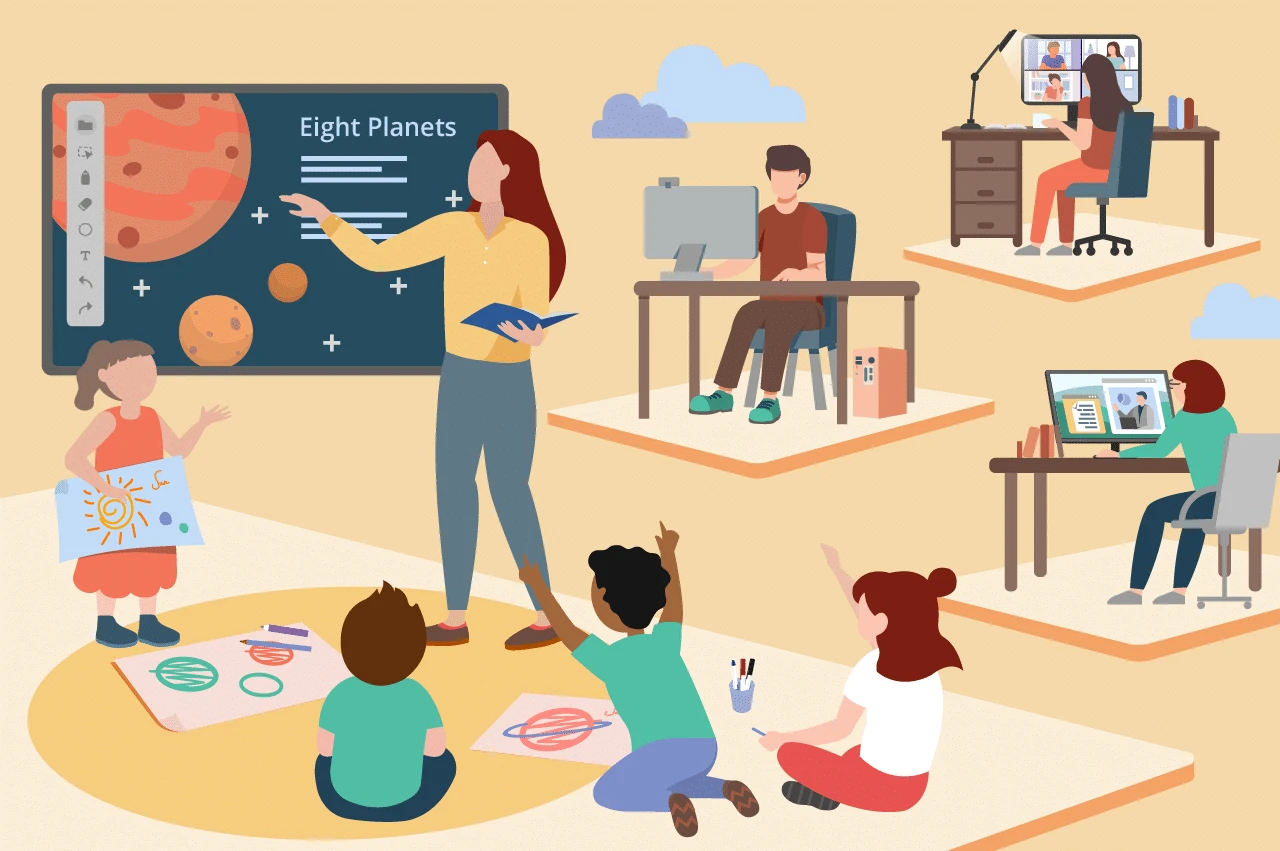As technologies have advanced, so too has our understanding of how students learn best. Rigid instructional models that focus solely on either online or in-person teaching often fail to meet diverse learners where they are. A blended approach that thoughtfully leverages digital tools alongside face-to-face lessons has emerged as a promising alternative.
There is no universal solution, as every educator understands. That is why blended learning now comes in many shapes. Let’s see what are the best models.
1. Rotation Model
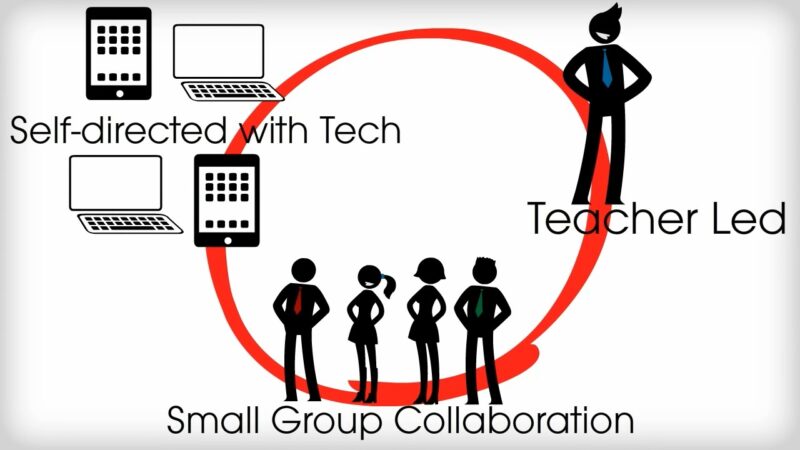
The station rotation model is a popular blended learning method utilized by many elementary educators. With this format, students engage in different learning activities during a scheduled class period.
Some stations focus on presenting new digital content through applications such as Nearpod, allowing each child to discover concepts at their own pace. Meanwhile, other areas encourage collaboration as students discuss ideas together. Teachers also work individually with any students needing extra guidance.
This varied structure provides an effective mix of online, group and self-directed work. Young learners maintain attention through a balanced mix of structured screen time and hands-on projects. It additionally allows instructors to readily provide targeted support where needed.
Creative teachers often develop individualized schedules for rotation based on various aptitudes. Some experiment with a flipped approach as well, exposing kids to unfamiliar topics at home prior to reinforcing understanding collectively in the classroom.
Research consistently shows high levels of participation using this station model. Educators also appreciate the ability to closely monitor achievement and easily modify upcoming activities based on performance. Internet access remains crucial, though blended innovation can stretch available resources.
2. Flex Model
The flex model structure focuses primarily on facilitating independent online study, with physical classes serving more as a support system. Students control their own pacing through extensive use of digital materials and resources.
Educators provide guidance and assistance to any learners grappling with challenges. This framework is well-suited for older high school and college-aged demographics better equipped for self-directed study. The flexibility inherent in this model allows students to more efficiently manage busy schedules while accessing content digitally at their convenience.
Individualizing to meet diverse learning needs is a strength of this approach. Instructors can also carefully track each pupil’s progress through digital reporting tools. Challenges involve ensuring all have reliable device and internet access, as not all come from environments supporting remote work outside class time.
Substantial training is likewise needed to effectively assist both online and in-person.
3. A La Carte Model
The a la carte model provides expanded academic options through supplemental online courses. Students have the freedom to explore subjects not typically offered at their school, guided by personal interests.
This framework presents greater opportunities for learners to specialize or delve deeper into specific areas of passion. With access to digitized classes on specialized topics, students can meaningfully augment existing core academics. Online platforms serve to broaden curricular breadth without overextending limited campus resources.
High schools and universities in particular may see such personalized electives as a benefit, as motivated students are offered direction in navigating scheduling logistics independently. Digital delivery also enables consistently exposing learners to advanced content typically restricted by geographic location, like AP courses or foreign languages.
4. Enriched Virtual Model
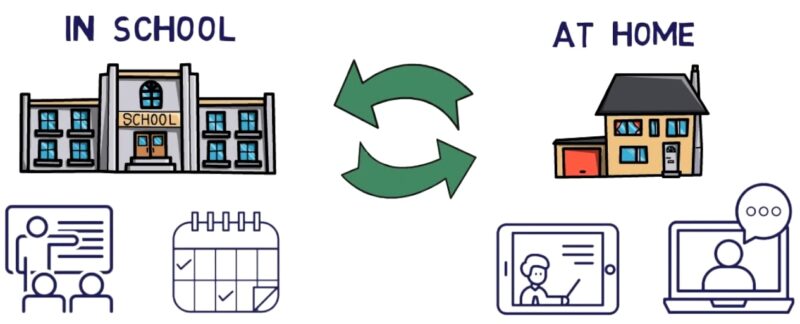
The enriched virtual model incorporates aspects of both online and in-person learning through a blended approach. Students’ academic schedules are split partially between the physical classroom and digital home assignments.
By design, this framework provides structure yet flexibility. Learners benefit from face-to-face guidance and collaboration with peers as facilitated by instructors during campus sessions. Meanwhile, the convenience of online coursework allows for independent work to be completed off-site based on individual paces.
High schoolers and college students in particular may find this model conducive to balancing academic responsibilities with busy lived realities. When executed cohesively, it aims to merge the most supportive elements of traditional and virtual environments.
5. Remote Blended Learning

With remote blended learning, students do most of their schoolwork online using things like Google Classroom or Zoom. Teachers are around to answer questions virtually through video chat or messages.
Kids can complete assignments from home or wherever they have internet access. They also have the flexibility to do the work on their own schedule rather than sit in a classroom at set times. This allows folks to learn even if they can’t be on a school campus.
The benefits are the convenience since students don’t have to be in one place for a school. As long as they have a laptop or tablet, they can access lessons 24/7 from different locations. Teachers also guide them through regular virtual meetings.
This setup works well for high school and college-age learners who can independently stick to a schedule. The freedom of remote learning is what makes it popular among students.
6. Station Rotation
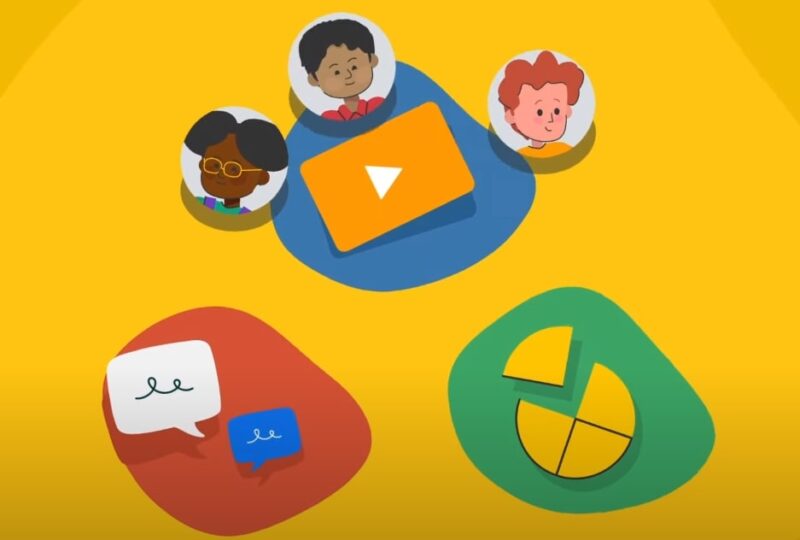
Some stations might be on computers for lessons or projects. Others are for working together in groups or one-on-one with the teacher.
Younger students especially stay engaged this way since they don’t sit and do the same thing the whole time. Teachers can also see how each student is doing up close and change things that aren’t working well. Technology fits in to make lessons more fun.
The benefits are that kids get variety in their day and don’t get bored. Teachers keep a close eye on progress. Schools need to provide computers or tablets to make the stations happen smoothly. Teachers also need training on setting up the stations.
Challenges can include making sure the kids move between activities orderly without wasting time.
7. Lab Rotation
It’s a good fit for elementary and middle school students to get hands-on time with technology. In the lab, they can really focus just on developing things like keyboarding or how to navigate online safely. Teachers are also there to help any student one-on-one.
The benefits are that kids get targeted practice with computers and get comfortable using tech for learning. Teachers keep an eye on how everyone is progressing with their skills. The schools need to have well-equipped computer labs though for this model to work.
8. Flipped Classroom

In this model, students watch video lessons or read material at home to learn new concepts for the first time. Then when they come to class, they spend time doing hands-on projects, group work, and discussions to use what they learned.
It works well for high school and college-age kids who can learn independently from online materials at home. In the classroom, teachers can help with whatever concepts students don’t quite understand yet.
The benefits are that class time is more interactive instead of just listening to lectures. Students really dive into applying and practicing the material together. Teachers are available there to assist in person too. It also allows learning at different paces.
Challenges can be that all students need reliable internet at home and devices to access video lessons.
9. Self-Directed Learning
With this model, students are in charge of their own learning by choosing classes and topics that interest them. They do this mainly through online lessons and resources that guide their self-study.
It’s a good fit for high school or college-age kids who are self-motivated learners and like to follow their own path. Teachers act more as mentors who are available to answer questions.
Benefits include flexibility – students can do school work anytime around their own schedules. The online setup allows learning customized to strengths and goals. Some find it more engaging to study what they want to explore.
Challenges can include keeping on track without set class schedules to follow. Monitoring progress also takes more effort without whole-group lessons.
10. Inside-Out Learning

It works well for high school or college students studying hands-on subjects like engineering, healthcare, or construction – where applying lessons outside the classroom makes a big impact. In the field, learners get to practice skills under teacher guidance.
Benefits include students truly understanding a subject by doing it rather than just being told about it. Teachers oversee their experience and serve as mentors. Getting involved in the community also interests some learners more than books alone.
Challenges can be scheduling time for all students to participate in outside activities.
11. Outside-In Learning
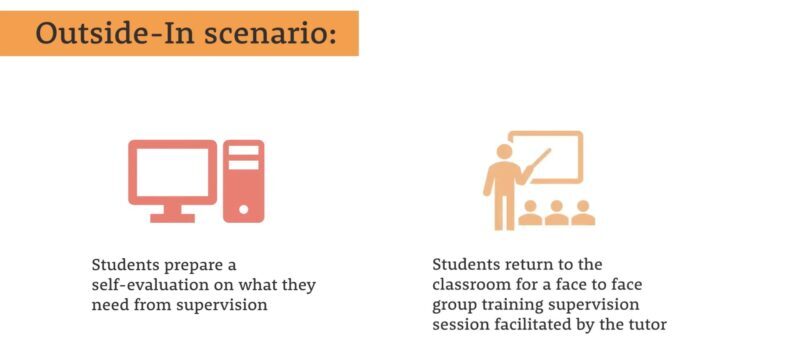
Outside-in learning has students first getting real-world experience in the community or job sites related to their field of study. They then come back to class and can talk about what they observed, and did, and how it relates to the course concepts.
This way of learning works well for hands-on high school or college programs like construction, mechanics, nursing, etc. where seeing concepts in action really helps cement the theoretical knowledge.
In their time outside the classroom, learners get to see their potential career up close and try out skills with guidance from their teacher or other professionals. Back in class, discussions allow comparing experiences and connecting them to the lesson material.
Last Words
Blended learning opens up many possibilities for keeping young people inspired about learning. The different types of models allow kids to learn in ways that suit them – whether they focus best on technology, groups, or hands-on experiences.
While these approaches take extra effort from teachers and school staff, they really support all kinds of students. When done right, blended learning gives freedom while still providing guidance from teachers. It engages learners through activities tied to real life too.
Related Posts:
- Top 10 Online Learning Platforms for Blended Education
- How to Leverage Virtual Classrooms for Effective…
- How to Incorporate Collaborative Learning in a…
- Best Practices for Using Online Platforms in Blended…
- Blended Learning vs. E-Learning - What is a Better Option
- Step-by-Step Guide to Creating a Blended Learning Curriculum
